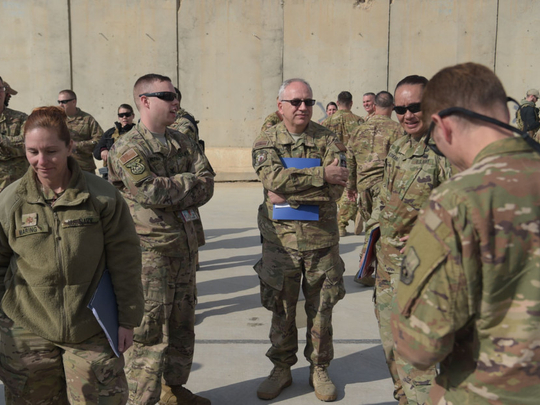
In lower Manhattan, near the place where the twin skyscrapers of the World Trade Center once towered over the scurry and noise of a great city, stands a bronze statue depicting a modern American serviceman astride a rearing stallion. It is a monument to the so-called Horse Soldiers, elite commandos who were among the first troops into battle during the long, grim war on terrorism. Through them, the statue honours all the Special Operations forces whose service — both overt and covert — has been the tip of the US spear.
The film 12 Strong depicts the story of the Horse Soldiers as only Hollywood can, and it is a story that needs no exaggeration. Seeking a rapid response to the terrorist attacks of September 11, 2001, the Pentagon and the CIA inserted 12-man teams into northern Afghanistan that October to link up with anti-Taliban warlords. Leveraging United States technology and air power (not to mention duffel bags stuffed with cash), the intrepid warriors galvanised a quick victory over the ruling Taliban, which had given safe harbour to Al Qaida terrorists as they plotted and trained.
A quick victory, but not a lasting one, alas.
Audiences made 12 Strong the No 2 film at the box office week before last, and the real-life heroes at the heart of the tale deserve the thanks of a grateful nation. But if those moviegoers were also watching the news, they would have seen images of desperate people on the balconies of Kabul’s Intercontinental Hotel, trying to escape from the Taliban gunmen waging a massacre inside.
These clashing realities — America’s ability to drive the Taliban from power alongside its inability to pacify Afghanistan — perfectly sum up the unappealing choices facing President Donald Trump as violence escalates in America’s longest war. The US Army is finalising a proposal to add 1,000 troops to the 14,000 already in the country, and to put those troops closer to the front lines.
When Trump took office, the US was down to about 8,500 troops and the Taliban controlled about one-third of the country from havens in neighbouring Pakistan. The new president was understandably unhappy to find such a robust enemy after more than 15 years of war — years that included the exploits of the Horse Soldiers, the killing of Osama Bin Laden and a 33,000-troop “surge” ordered by former president Barack Obama in 2009.
Trump showed his frustration earlier this month in a string of tweets complaining about Pakistan’s duplicity in sheltering the Taliban. But he’s unlikely to find any more traction with this slippery frenemy than either Obama or former US president George W. Bush did. Indeed, he may have even less traction, because while the US has been playing whack-a-mole in Afghanistan, China has been expanding its sphere of influence. Beijing now stands ready to supply a blanket should Trump try to freeze out Pakistan.
The Post reported that the US Army believes an expanded, empowered American force will boost confidence among Afghan government fighters and extend official control from around 66 per cent to 80 per cent of the countryside. That sounds like progress, I suppose. But it doesn’t sound like an endgame.
Arguably, nothing ever will. Twenty-five centuries of history suggest that Afghanistan is as close to ungovernable, untameable, as any land on Earth. The list of conquerors and imperialists who have come and gone is daunting: From Cyrus the Great, the father of the Persian Empire, to Alexander the Great, to Genghis Khan, and later Queen Victoria. Even Napoleon thought about having a crack at Afghanistan, and maybe it says something about the degree of difficulty that he attempted a winter march on Moscow instead.
It is the fate of that rugged, tough country to lie at the fault line where geopolitical plates collide. Muslim, Buddhist, Hindu and Orthodox Christian cultures press towards its borders; Shiite and Sunni nations wrap it like parentheses. It is somehow too remote yet too central to ignore. Like the nation’s booming opium crop, Afghanistan is a habit the world can’t shake.
But they say the first step is admitting America has a problem. Trump bills himself as the ultimate straight shooter: Now he has a duty to talk plainly about US goals and expectations for Afghanistan. US is going to be there indefinitely because the price of leaving is too high. It can’t allow another radical government to take root and provide sanctuary to violent extremists. It has no choice but to bolster the anti-Taliban forces in the country.
That’s a far cry from winning. But absence of victory is not always a defeat. There is value in making our world a bit safer from day to day and year to year — while Hollywood gives us the occasional happy ending.
— Washington Post
David Von Drehle is a noted American author and journalist.








